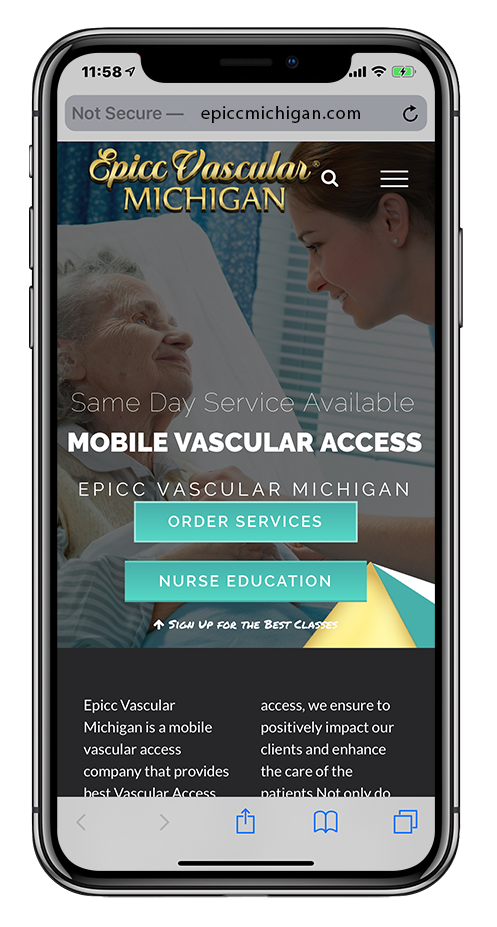Looking for the BEST Mobile Vascular Access & Team Support in Michigan? Call Now 810-202-1004
Most of these risks are rare. If the physician has ordered or advised a PICC/Mid line, the advantages usually outweigh the risks.
- There may be a need for more than one insertion attempt.
- Some bleeding may occur at insertion site
- Puncture of artery, nerve or tendon may occur during insertion.
- Thrombosis (clotting) may occur due to the catheter being in place.
- Phlebitis (vein inflammation) may occur with all IV insertions.
- Site infection/ blood stream infection may occur with all IV insertions.
- Blood vessels and tissues are better protected for irritant and hyperosmolar infusions.
- Less peripheral iv insertions when longer than 4 days of infusions are required.
- Infusion rates can be higher than peripheral IV use. Useful for multiple infusion requirements in a short time span.
- Low rate of infection and complications when compared with centrally inserted lines.
- May be used for blood level testing.
The insertion of a peripheral IV may cause some brief discomfort as the needle enters the skin. For the insertion of PICC and Midlines however, a local anesthetic agent is injected to further alleviate discomfort of needle insertion.
Midlines are longer than regular peripheral IV’s and measure approximately 8 inches or less. Midlines are peripheral catheters inserted with the help of ultrasound guidance into a large vein in the upper arm. Of the Basilic, Brachial and cephalic veins, the basilic vein on the right arm is preferred. The tip of the midline usually sits at or below the axilla. The Midline is usually in place for any infusion requirements that are between 4 days and 4 weeks. Full sterile precautions are taken for insertion in order to prevent infection.
PICC lines are Peripherally Inserted Central Catheters, 45-55cm long, thin flexible catheters, which are placed with the help of ultrasound guidance into a large vein in the upper arm. Of the Basilic, Brachial and cephalic veins, the basilic vein on the right arm is preferred. The tip of the Picc line is placed so that it sits in the lower third of the superior vena cava just above the heart. Sometimes a leg vein is used for infants. Confirmation of placement is done either with a chest x-ray or with the more modern approach of EKG or ultrasound. A PICC line is longer than a midline and can be used for longer periods of up to 12 months but are usually in place for 6-8 weeks. PICC lines are used to administer IV medications or IV fluids that may irritate peripheral veins and are therefore placed in the larger veins of the body. Full sterile precautions are taken for insertion in order to prevent infection.
Peripheral IV’s are soft flexible catheters which are inserted into a vein on either arm or hand (rarely into the external jugular vein or leg) with the help of a needle. Peripheral IV’s are are usually 1-1.75 inches in length and are used for short term infusions. The catheter is usually changed every 3-4 days to prevent infection.
Benefits of Using Epicc Michigan
- Increase vascular access device placement success rate of greater than 98% compared with staff nurses who only occasionally insert a PICC line 50-70% (Java 2004)
- Using highly specialized and trained nurses who work in the vascular access field everyday
- Increase patient satisfaction
- Eliminate the responsibility of staffing, providing benefits, sick calls, and maternity leaves
- Improve data collection on catheters to enhance staff education and awareness
- Provide patients with teaching/discharge instruction
- Supply materials (i.e. ultrasound, custom PICC tray, tip location system, & tip confirmation system) at a flat rate
- Free up Interventional Radiology (IR) suite for higher reimbursement cases
- Increase profits for radiologist and facility/cost-effective compared to in-house radiologist placed line
- Provide flexibility to the healthcare facility via tailor-made contracts
- Increase productivity and time management for your staff


